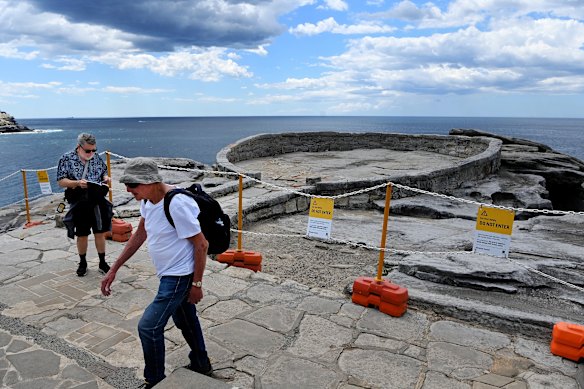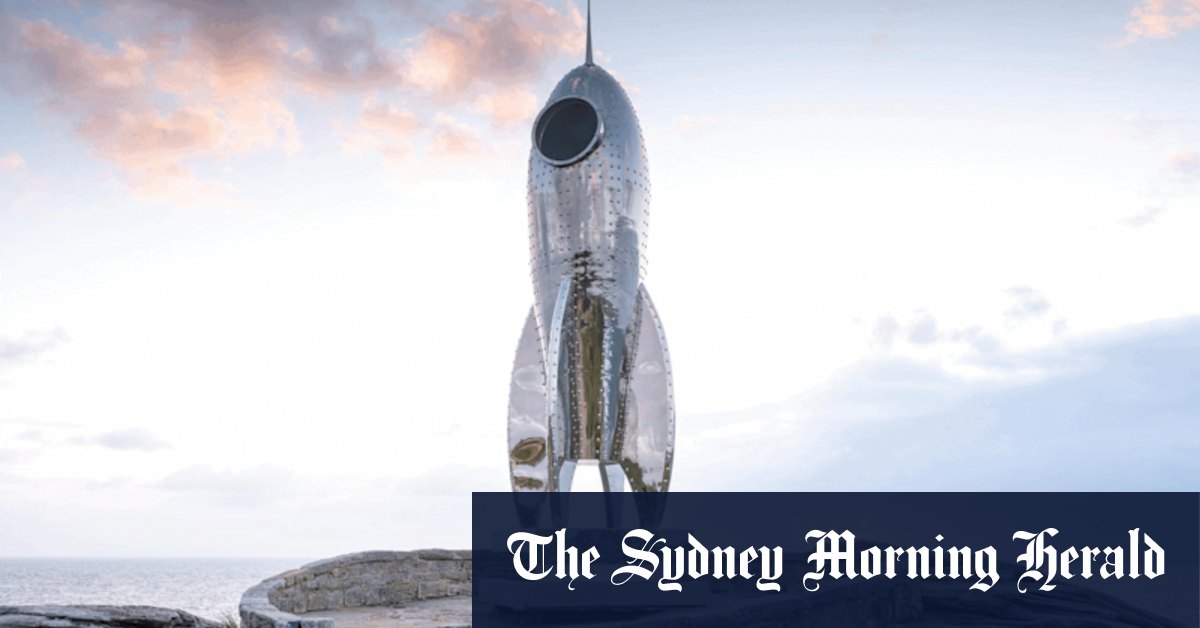Four days before Sculpture by the Sea opened to hundreds of thousands of visitors, founder David Handley was told one site was at risk of tumbling into the ocean.
The lookout from Marks Park, now cordoned off by yellow signs saying “do not enter”, was deemed unsafe by a team of independent geotechnical consultants after rockfalls in Bronte and Bondi triggered the closure of part of a walkway between the eastern suburbs beaches.

One site for Sculpture by the Sea was deemed unsafe by geotechnical consultants. It caused a reshuffle of six other sculptures, in a four-day window.Credit: Kate Geraghty
“Together with council, we agreed that, with using an abundance of caution, we wouldn’t put sculptures or have people go on to the lookout this year,” Handley said.
This, in addition to a shipment of eight sculptures from Japan that was late due to the typhoon season and a boat carrying a Slovakian sculpture catching on fire, plunged the organisation into a last-minute scramble.
Organisers knew about the possibility of delayed sculptures and a geotechnical assessment shutting down the lookout, but both were confirmed four days before the exhibition opened to the public.
The cliff verdict forced the organisation to pull out Plan B and reshuffle six sculpture locations.

Clayton Blake’s Odyssey sculpture last year in the now-closed location.Credit: Charlotte Curd
“You can’t put any old sculpture next to each other; they have to fit comfortably next to each other,” Handley said. “[We had] sculptures coming in on schedule and still installing those, while working out how we’re going to rearrange the exhibition to take into account the delays and confirmation that we couldn’t have a sculpture on the lookout … It was a challenge.”
While rockfalls are an omnipresent threat along most Sydney coastlines, they are rare and unpredictable by nature, said Bruce Thom, emeritus professor of geoscience at the University of Sydney.

